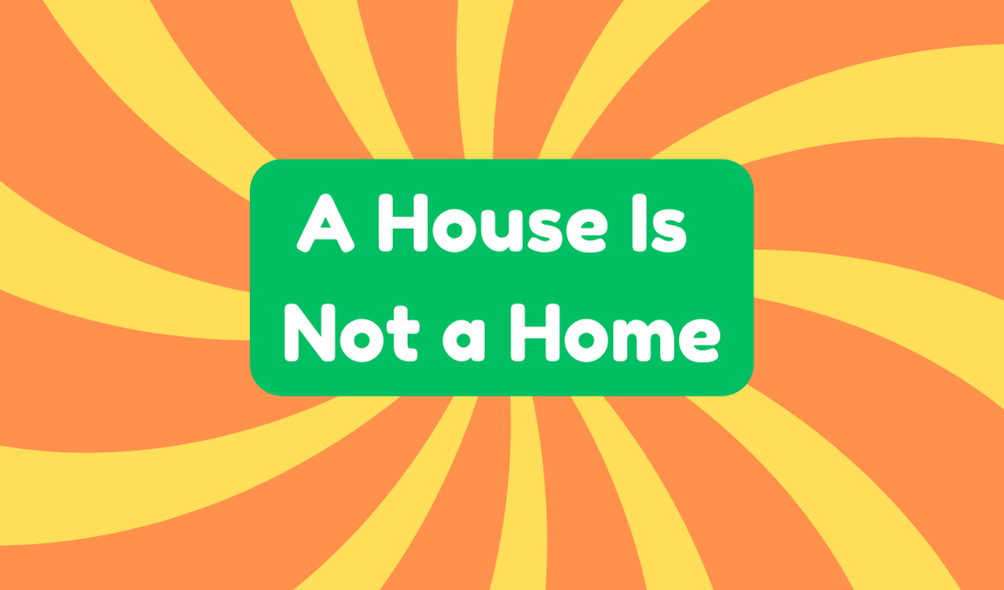The phrase “A house is not a home” highlights that a mere structure lacks the emotional connections that define true belonging. A house can be empty, cold, and lifeless, while a home is filled with warmth, memories, and personal significance. This distinction stresses the importance of individual experiences and emotional ties to living spaces. Understanding this can reshape how people perceive their environments and foster deeper connections, prompting further exploration of what home truly means in their lives.
Synonyms
The concept of home often leads to a search for synonyms that capture its essence beyond mere bricks and mortar. Terms like “sanctuary,” “haven,” and “refuge” evoke a sense of emotional attachment, emphasizing the comfort found within a physical space. However, such words can obscure the reality that these feelings are deeply personal and subjective. This linguistic exploration reveals the importance of individual experiences, challenging the notion that one term can universally define home.
- Sanctuary – A sacred space providing peace.
- Haven – A safe place from chaos.
- Refuge – A shelter during life’s storms.
Example of Sentences
Countless examples illustrate the distinction between a house and a home, often revealing deeper truths about human emotions and relationships. For instance, a photo of a family gathered for a meal fosters an emotional connection, while a vacant house remains just bricks and mortar. Similarly, a child’s laughter echoing in a cozy living room speaks to domestic comfort, contrasting with the sterile silence of an empty space. The value of these connections is unmistakable:
- The warmth of shared moments.
- A welcoming space filled with memories.
- Emotional ties that transcend physical boundaries.
In essence, homes are crafted with love.
Origin
Originating from various cultural and literary sources, the phrase “A house is not a home” captures the complex emotional landscape associated with living spaces. Its cultural significance is rooted in both American literature and popular music, where it emphasizes the stark contrast between mere physical structures and genuine emotional connections. The phrase emerged in the mid-19th century, attributed to Margaret Fuller, and has since been referenced in various works, reflecting societal norms surrounding family life. While its sentiment remains poignant, one must critically assess its relevance in modern urban existence and the evolving implications of true domesticity.
Collocations
Collocations associated with the phrase “A house is not a home” reveal deeper insights into the ways language shapes perceptions of domesticity. Such phrases often evoke feelings tied to emotional attachment and the essence of domestic space, bridging the gap between structure and sentiment. This is underscored by collocations such as:
- Create a home: Emphasizes the active role in fostering warmth.
- Feel at home: Speaks to the comfort derived from emotional connections.
- Home is where the heart is: Reinforces the notion that belonging transcends physicality.
Together, these expressions illuminate the intricate relationship between language, emotion, and lived experiences in one’s environment.
How to Use in Everyday Language
Although many people casually use the phrase “a house is not a home,” understanding its deeper implications can enhance everyday conversations. This saying reminds individuals that emotional comfort and a true sense of belonging are not guaranteed by mere architecture. To elevate discussions about domestic space, one can reflect on personal experiences, sharing stories that highlight emotional resonance rather than just physical attributes. By expressing how a place nurtures relationships and feelings, conversations can become more meaningful. Encouraging others to explore what makes their spaces ‘home’ fosters deeper connections, promoting an appreciation for the intricacies of personal environments beyond simple structure.
Why Is It Still Relevant Today?
The phrase “a house is not a home” continues to resonate in modern society, highlighting a fundamental truth about human experience. In an era marked by rapid technological change and shifting lifestyles, the emotional connection individuals form with their living spaces is often overlooked. While modern living focuses on aesthetics and convenience, it risks reducing homes to mere structures. This phrase serves as a reminder that a true home transcends physical walls; it embodies comfort, security, and cherished memories. By acknowledging this distinction, society can prioritize emotional richness, fostering deeper connections within spaces that reflect personal identity and belonging.







